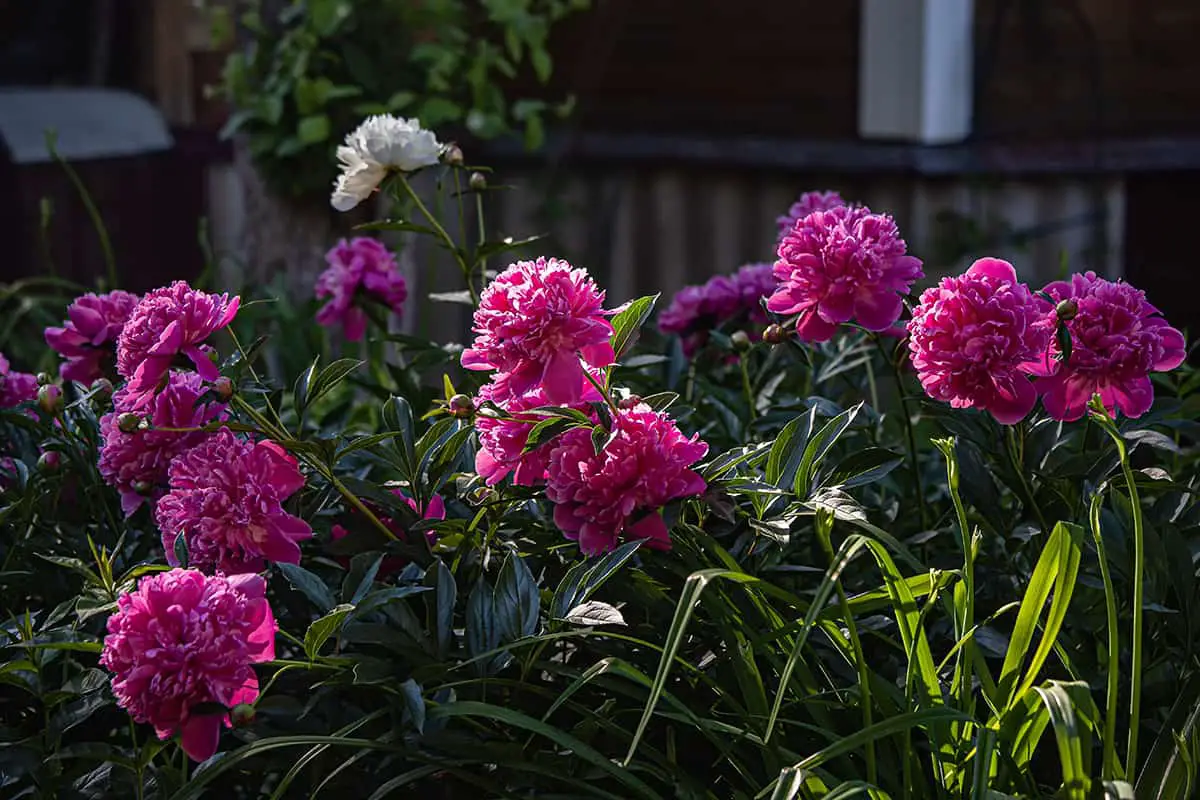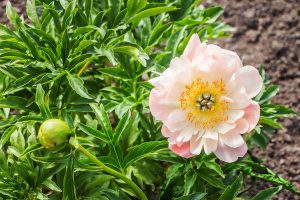Peonies are herbaceous flowering perennials, which are loved both as landscape plants and also as cut flowers since they produce dramatic displays of blooms.
Peonies also create mounds of glossy green foliage in the garden, making them an attractive addition to spring and summer borders. Here we look at what type of lighting is best for peonies, and how your local climate can affect whether your peonies will prefer sun or shade.
Most peonies should be grown in full sun or partial shade, and the exact type of lighting which will be best for your peonies depends on what climate zone you are growing them in. Peonies do not like to be grown in full shade, so always avoid positioning peonies in heavy shade in any climate.
Peonies grown in shade will struggle to produce flowers, and the overall size of the plant will be greatly diminished. Peonies grown in shade will also produce less foliage, and will eventually die without some direct sunlight. Keep your peonies in full sun or partial shade for healthy plants that reward you with delightful blooms every spring and summer.
Table of Contents
Best Climates for Peonies
Most herbaceous peonies are recommended for growing in USDA hardiness zones 3 to 8. There are some exceptions to this, such as Itoh peonies, which should be grown in hardiness zones 4 to 9. Itoh peonies are a specific type of hybrid peony that result from crossing an herbaceous peony with a tree peony.
They are known for producing larger flowers more in keeping with those produced by tree peonies, yet they have the herbaceous habit of herbaceous peonies. If you live in a climate towards the higher end of peony hardiness zones, then Itoh peonies are a good option because they are more tolerant of high levels of heat. For those in the lower hardiness zones, the standard herbaceous peonies represent a good choice.
Sun or Shade for Peonies?
Peonies can be grown in full sun or partial shade, but the specific type of light exposure that will be best for your peonies depends on the climate you are growing them in.
Growing Peonies in Cool Climates
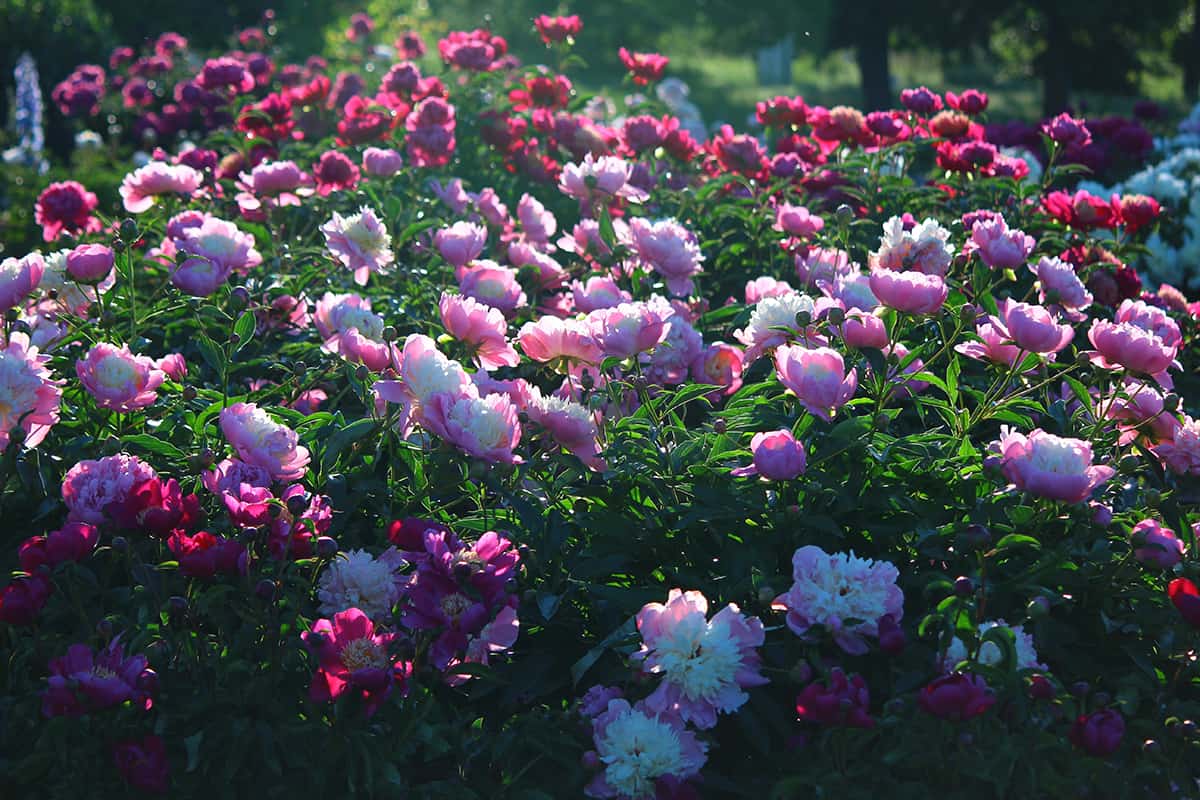
If your climate is among the lower range of USDA hardiness zones 3 to 8, then your peonies should be grown in full sun. Peonies thrive with the most amount of sun possible, however, they struggle when the heat is intense. Cooler climates are ideal for keeping peonies in a position of full sun because the temperatures won’t get high enough to cause the flowers any problems.
Peonies planted in partial shade in cooler climates will survive, but you can expect a lower production of flowers compared to those plants grown in full sun. The minimum amount of sun a peony plant should get is 6 to 8 hours, though more sun is ideal in cooler climates. Cooler climates will help peonies to flower for longer, so you may experience blooms that last for upwards of two weeks, compared with those grown in warmer climates, where a bloom time of between 7 and 10 days is more likely.
Growing Peonies in Warm Climates
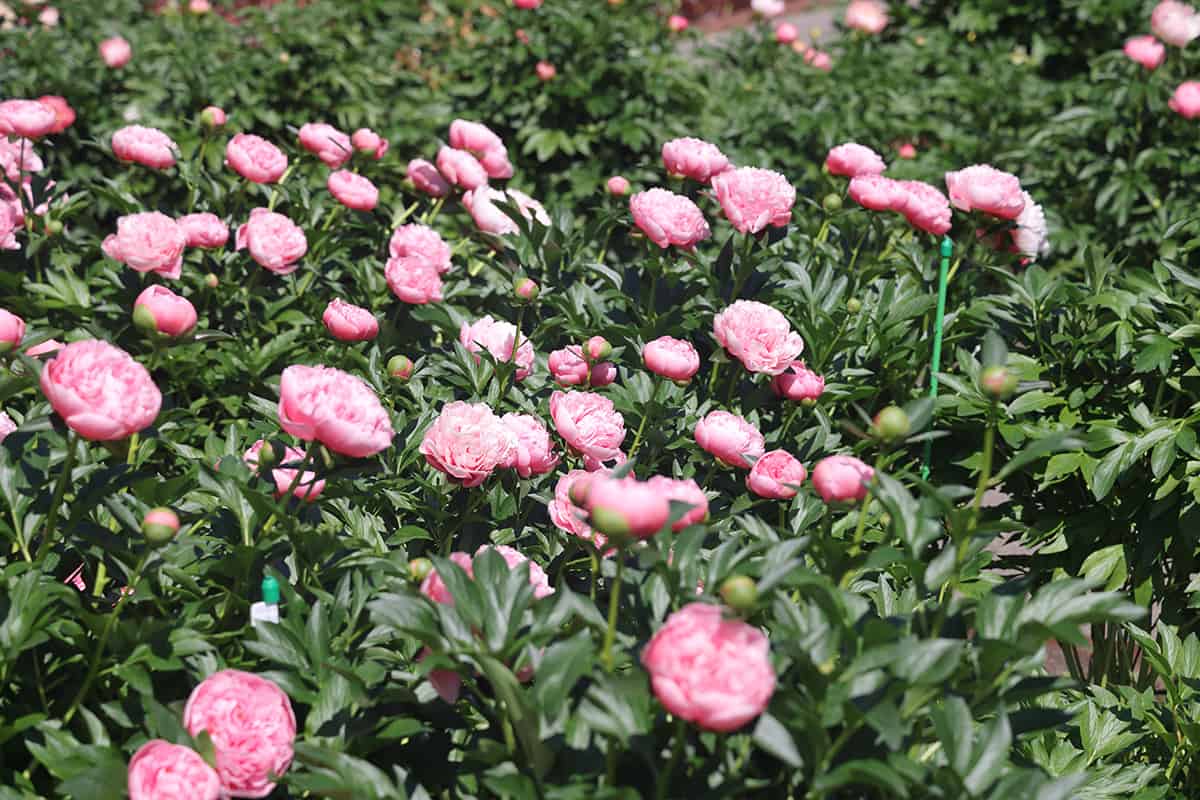
In warmer climates, peonies should be planted in a position where they receive partial shade. This could be dappled sunlight, or it could be a spot where they are in full sun in the morning and full shade in the afternoon. Either of these would work well, as long as the plants are receiving some sort of protection from the sun in the afternoon when the sun is at its most intense, and temperatures are at their highest.
Peonies can thrive in warm climates, but you will likely find that your flowers don’t bloom for as long as those grown in cool climates, and this is a result of the heat since most peonies are not heat tolerant. Shading the flowers in the afternoon will go some way to helping protect them from the heat, and encourage them to remain in flower longer.
The best types of peonies to choose from in warm climates are Itoh peonies, which are slightly more tolerant of heat, or early-season blooming herbaceous peonies. Early bloomers which flower in late spring will fare better than mid-season or late-season bloomers because they will arrive before the summer temperatures start to soar, and therefore won’t be subjected to high levels of heat.
When growing any type of herbaceous peony in a warm climate, you should avoid mulching the soil in fall and winter, which is ordinarily recommended to help peony roots survive against freezing temperatures. However, in warm climates, mulching the soil can prevent the roots of the peony from experiencing the cold temperatures they need to go dormant.
Can Peonies Tolerate Shade?
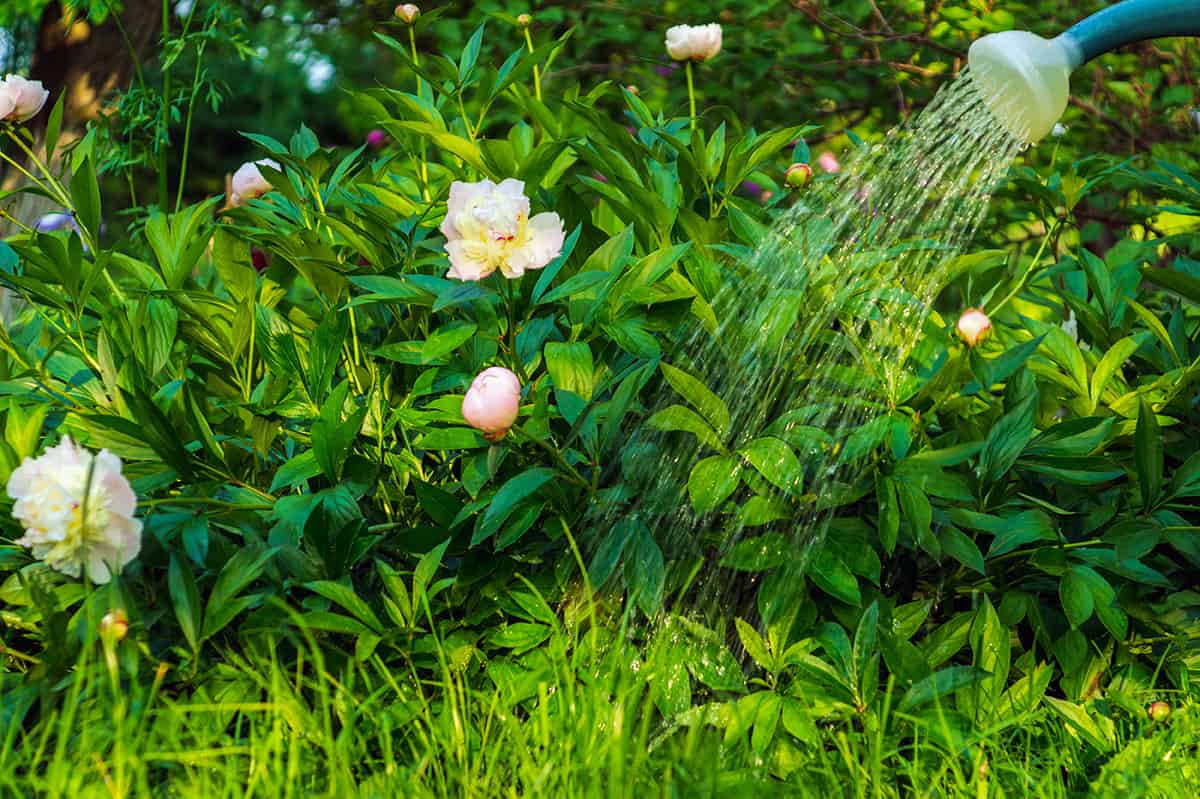
Peonies need at least 6 hours of sunlight each day to thrive. They can be grown in partially shaded positions, but full shade should be avoided if you want to see a profusion of flowers on your peony plant. Dappled shade works well for many peonies, especially those grown in hot climates. Itoh peonies are known for being particularly adaptable to different light exposure, so these can be grown in dappled shade or partial shade.
Tree peonies are another type of peony that will thrive in dappled shade, and in fact, some shade is essential for tree peonies which will struggle if kept in full sun at all times. You can provide dappled shade by planting peonies beneath the open canopy of taller trees, or underneath a structure such as an arbor or pergola which will provide some partial shade.
If you are growing peonies in cooler climates then shade is not necessary and these peonies will thrive in full sun, however, they can be grown in partial shade if you have a lightly shaded area of the garden where you particularly want to display your peonies. Avoid full shade for any type of peony in any climate, as this will not be beneficial for the plant’s growth.
